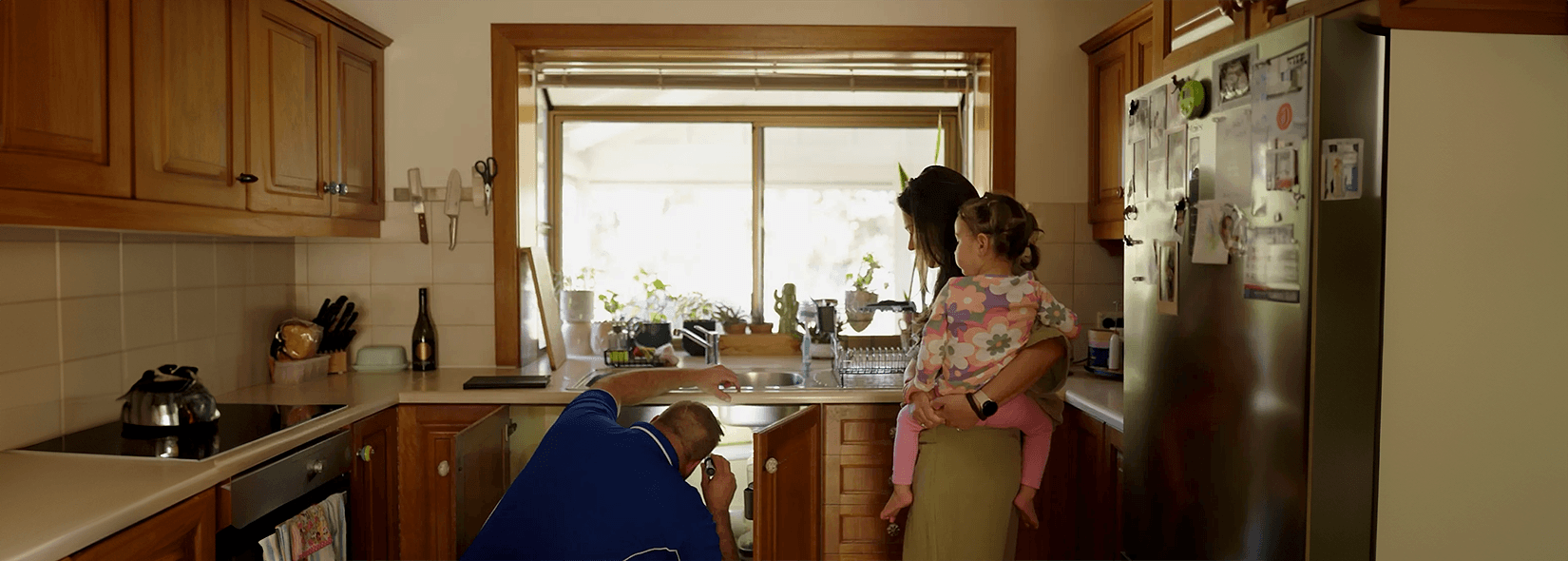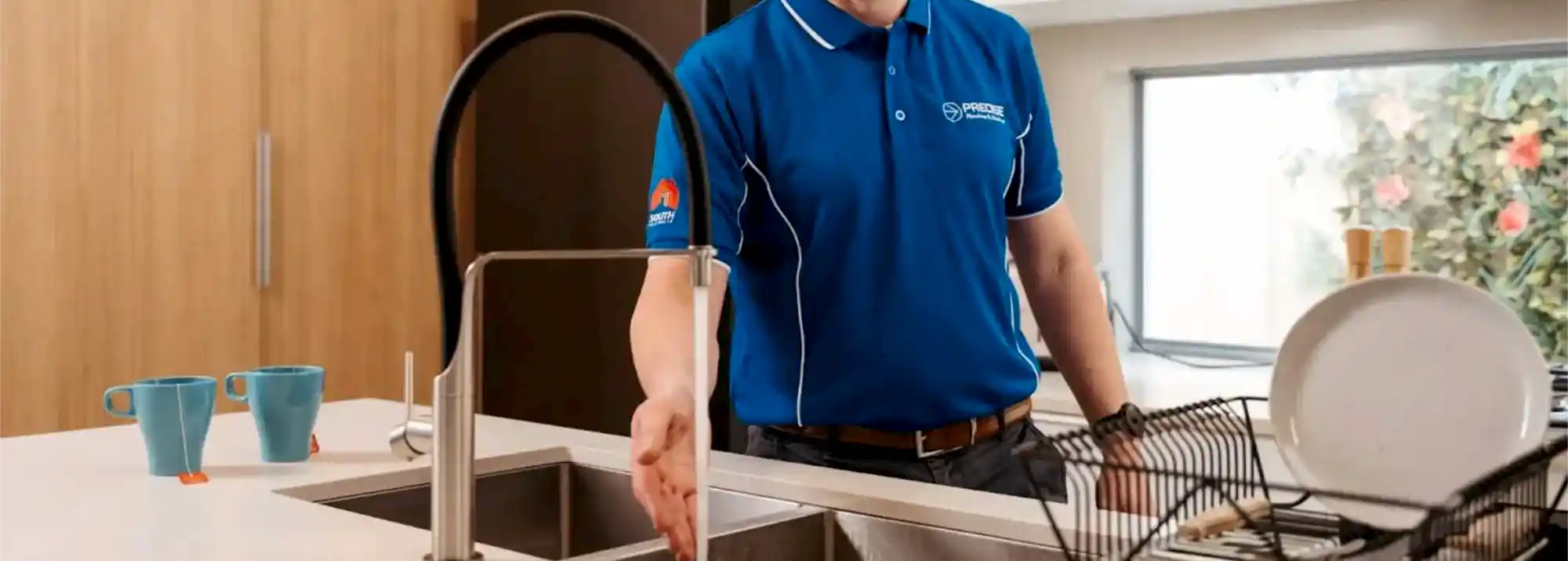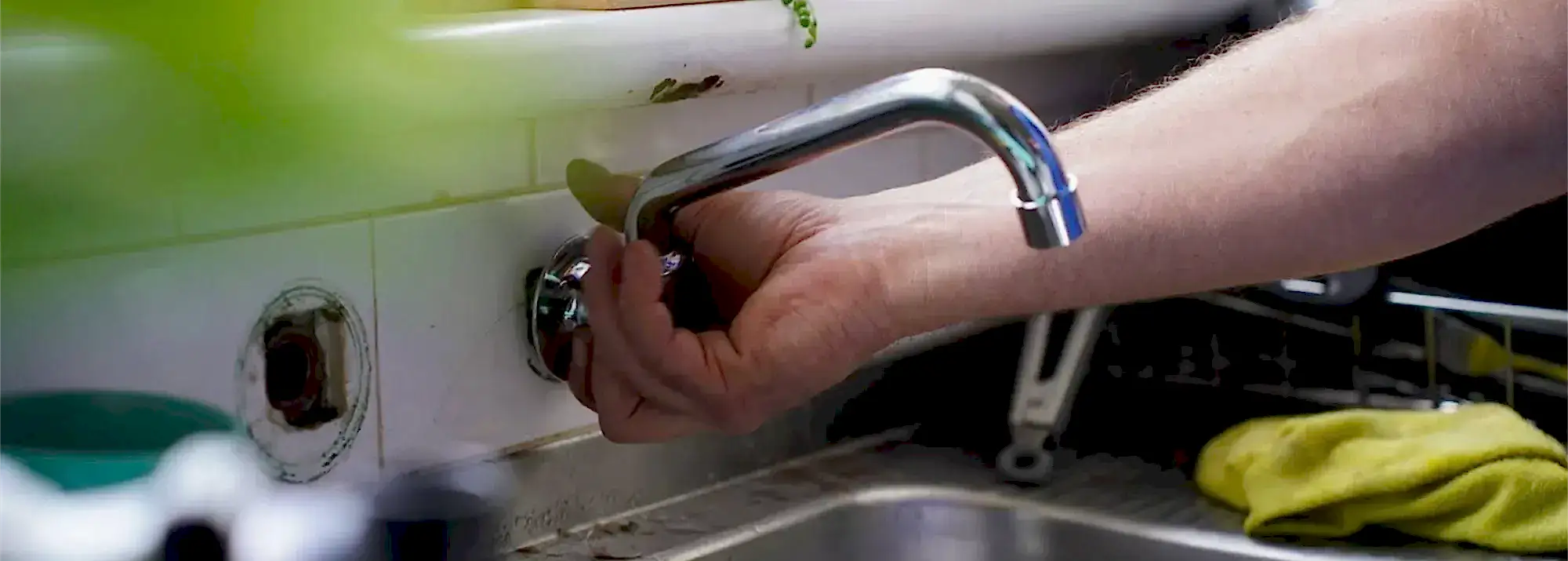A broken tap can be more than just an inconvenience—it can lead to higher water bills, potential water damage, and disruptions in your daily routine. Whether it’s a leaking tap, a stiff handle, or a tap that’s stopped working entirely, knowing how to fix the issue quickly can save you time and money.
At Precise Plumbing and Electrical, we’re committed to providing high quality plumbing services to Adelaide homeowners. Our expert advice on diagnosing, repairing, and replacing broken taps ensures that you receive top-notch service. In this guide, we’ll walk you through the most common tap issues, practical DIY solutions, and when to call a professional.
Common Causes of a Broken or Leaking Tap
Understanding why a tap fails can help prevent future problems. Here are some of the most frequent causes:
- Worn-out washers and O-rings – Over time, these components deteriorate, leading to persistent leaks.
- Mineral buildup – Hard water deposits can clog internal components, reducing water flow and efficiency.
- High water pressure – Excessive pressure can wear out seals and damage internal mechanisms, causing leaks.
- Corrosion – Older taps made from lower-quality materials may rust, reducing performance and durability.
- Loose fittings – Handles, spouts, and internal parts may loosen over time, affecting functionality.
- Broken pipes – Broken pipes can lead to tap issues by causing irregular water flow or complete stoppage. Determining the cause of the breakage is crucial, and only licensed professionals should handle this type of plumbing issue to ensure safety and proper resolution.
Understanding Leaking Taps
Signs Your Tap Needs Repair or Replacement
Not all tap issues are immediately obvious. Here are some telltale signs that your tap may require professional attention:
- Constant dripping – A dripping tap, even when turned off, often indicates a worn-out washer or internal seal.
- Stiff or loose handles – Difficulty turning the tap or excessive wobbling suggests internal wear.
- Leaks around the base – Pooling water at the base may indicate faulty O-rings or a loose connection.
- No water flow – A tap that suddenly stops working could have a clogged aerator or a more serious plumbing issue.
- Unusual noises – Screeching, whistling, or banging sounds may indicate high water pressure, worn-out components, or trapped air.
- Leaky faucet – A leaky faucet is a common household issue that often requires minor plumbing repair, indicating the need for professional attention to prevent further damage.
What to Do If Your Tap Is Broken
If you notice any of these issues, follow these steps to diagnose and potentially resolve the problem before calling a plumber.
- Check for leaks around the base of the tap and under the sink.
- Ensure the water supply valves are fully open.
- Inspect the aerator for any blockages.
- Check for a blocked drain, as it can cause water to back up and affect tap performance. If you suspect a blocked drain, it may be necessary to contact a qualified plumber to unblock it and prevent further issues.
- Test the water pressure to see if it is consistent.
Step 1: Turn Off the Water Supply
Before attempting any repairs, shut off the water supply to prevent leaks and water wastage. Use the isolation valves under the sink or turn off the main water supply.
Step 2: Identify the Problem
Examine the tap to determine the specific issue. Whether it’s a leak, stiff handle, or inconsistent flow, identifying the problem will help you decide on the best course of action. Additionally, check for issues with mixer taps, such as cartridge failure due to debris, which can lead to leaks.
Step 3: DIY Fixes You Can Try
While we always recommend professional repairs for safety and effectiveness, maintaining plumbing fixtures is crucial for optimal tap performance. Here are some basic fixes that may help:
Replacing the washer or O-ring:
- Turn off the water supply.
- Unscrew the tap handle and remove the cover.
- Use pliers to extract the old washer or O-ring.
- Insert a new one of the same size.
- Reassemble the tap and turn the water back on to check for leaks.
Tightening loose screws and fittings:
- Locate screws in the tap handle or spout.
- Use a screwdriver or Allen key to tighten them.
- Ensure the handle operates smoothly without excessive force.
Cleaning the aerator:
- Unscrew the aerator at the end of the tap spout.
- Soak it in white vinegar for at least an hour to dissolve mineral buildup.
- Use a toothbrush to remove any debris, then rinse and reinstall.
Checking for blockages:
- Turn off the water supply and remove the tap spout if possible.
- Inspect for debris or limescale.
- Use a pin or small brush to clear obstructions.
- Flush the tap with water to ensure smooth flow.
Step 4: Call a Professional Plumber
If your tap is still malfunctioning or you’re unsure about repairs, it’s best to call a local plumber. At Precise Plumbing and Electrical, our expert technicians provide reliable tap repairs and replacements across Adelaide.
📞 Call us at 8356 2750 or book online for fast and professional service.
Tap Repair vs. Replacement
When faced with a leaking tap, homeowners often grapple with the decision of whether to repair the tap or replace it entirely. The best course of action depends on several factors, including the severity of the leak, the age and condition of the tap, and the cost of repairs versus replacement.
In many cases, a leaking tap can be repaired by simply replacing the worn-out washer or O-ring. This is a relatively straightforward and inexpensive fix that a professional plumber can handle with ease. However, if the leak is more severe or the tap is old and showing signs of significant wear, it might be more cost-effective to opt for a complete tap replacement.
While replacing a tap can be more expensive upfront, it offers long-term benefits such as improved water efficiency and reduced maintenance costs. Modern taps often come with advanced features like low-flow aerators and touchless sensors, which can enhance your overall user experience and contribute to water conservation.
Why You Shouldn’t Ignore a Broken Tap
Delaying tap repairs can lead to bigger issues. Here’s why you should address problems promptly:
- Higher water bills – A dripping tap can waste thousands of litres per year, increasing costs unnecessarily.
- Water damage – Leaks can cause structural damage to cabinets, floors, and walls, leading to expensive repairs.
- Mould and mildew growth – Persistent moisture promotes mould, affecting indoor air quality and health.
- Inconvenience – A faulty tap can disrupt daily tasks like cooking, cleaning, and washing.
- Blocked drains – Ignoring tap issues can lead to blocked drains, causing overflowing sinks and toilets. This requires professional expertise to fix and poses health and safety risks.
Preventing Tap Issues: Tips for Longevity
While wear and tear are inevitable, you can extend your tap’s lifespan with these maintenance tips:
✔ Regular maintenance – Check and replace washers, O-rings, and cartridges as needed. Regular plumbing projects are essential for maintaining tap performance and preventing issues.
✔ Avoid over-tightening – Turning taps off too tightly can damage internal components.
✔ Use a water softener – Reducing mineral buildup helps maintain optimal tap performance.
✔ Flush pipes periodically – Running hot water through taps clears minor debris buildup.
✔ Schedule routine plumbing checks – Professional inspections can catch small issues before they escalate.
Finding a Reliable Plumber
When it comes to repairing or replacing a leaking tap, finding a reliable and professional plumber is crucial. A skilled plumber will have the necessary expertise, experience, and tools to fix the tap quickly and efficiently, ensuring a long-lasting solution.
To find a trustworthy plumber, start by asking for referrals from friends, family, or neighbors who have had positive experiences with local plumbers. Online reviews and ratings can also provide valuable insights into a plumber’s reputation and quality of service.
Additionally, make sure to choose a plumber who is licensed, insured, and certified. These credentials ensure that the plumber has the proper qualifications and adheres to industry standards, giving you peace of mind that the job will be done correctly.
Emergency Plumbing Services
In some situations, a leaking tap can escalate into a plumbing emergency that requires immediate attention. For instance, if the leak is causing significant water damage or flooding, it’s essential to call a plumber right away to prevent further harm.
Emergency plumbing services are available 24/7 to help homeowners tackle unexpected plumbing issues. These services can include emergency repairs, replacements, and maintenance to address the problem promptly and effectively.
When selecting an emergency plumbing service, look for a company that offers round-the-clock availability, a fast response time, and a comprehensive range of services to handle various plumbing emergencies. This ensures that you’ll receive the help you need when you need it most.
Trust Adelaide’s Tap Repair Experts
If you’re dealing with a leaking, noisy, or malfunctioning tap, Precise Plumbing and Electrical is here to help. As experienced Adelaide plumbers, we provide expert tap repairs and replacements for homes and businesses across Adelaide. With years of expertise and a commitment to quality service, we offer comprehensive plumbing solutions, including installation, repair, and maintenance of various plumbing fixtures.
📞 Need a fix? Call us today at 8356 2750
Book online: Visit our website
Get your tap fixed quickly and efficiently with Precise Plumbing and Electrical—Adelaide’s trusted plumbing experts.
Conclusion
Leaking taps are a common issue in many households, but with the right tools and expertise, they can be fixed efficiently. By understanding the causes of a leaking tap, homeowners can take proactive steps to prevent them from occurring. When a leak does happen, finding a reliable and professional plumber is key to ensuring a quick and effective repair or replacement.
Regular maintenance and timely repairs can help prevent plumbing emergencies, but it’s also important to be aware of the signs of potential issues. By staying vigilant and taking prompt action, homeowners can avoid costly repairs and minimize the risk of water damage.
Overall, dealing with a leaking tap requires a combination of knowledge, expertise, and prompt action. By following these tips and guidelines, homeowners can keep their taps in good working order and avoid the hassle and expense of a plumbing emergency.





